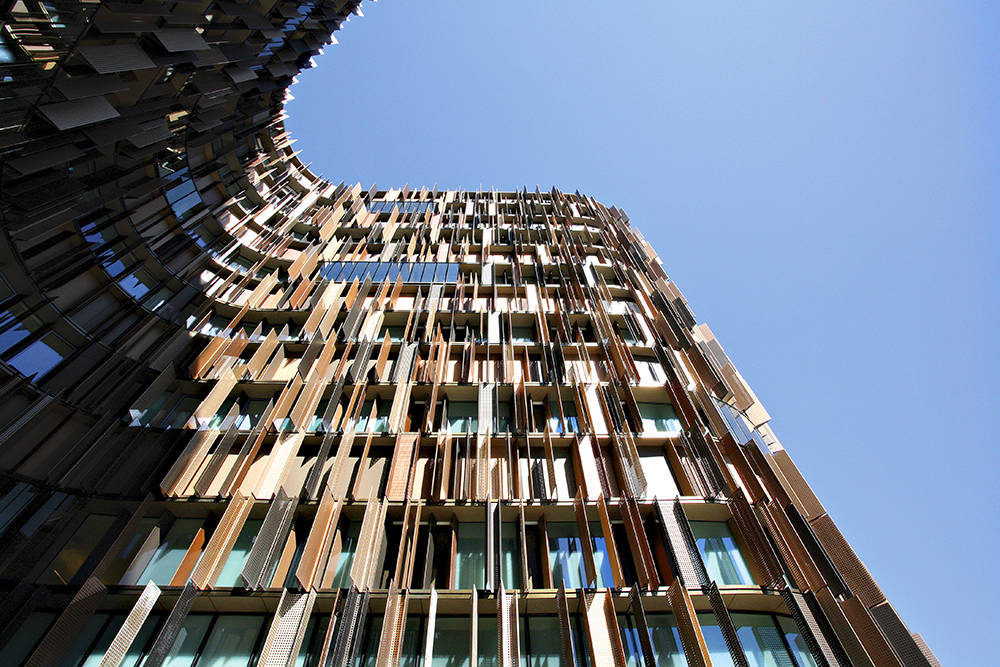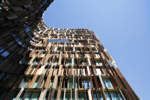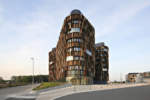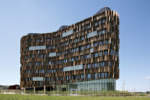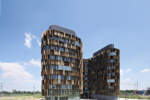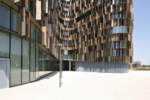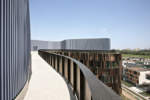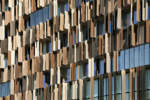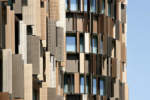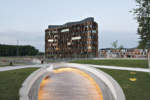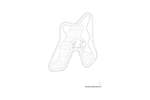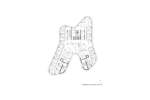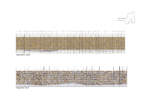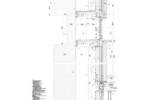architect: Cino Zucchi Architetti
location: Assago
year: 2011
New urban landscapes.
The U15 building is located in the new Milanofiori Nord district which is being built according to the master plan designed by Erick van Egeraat, in an area characterized by isolated buildings immersed in a park. The project adapts to the indications of the plan, accentuating the relationship between the building and the open spaces and the landscaping of the park, and considerable attention has been paid to the orientation of the sunlight and the environmental quality of the workspaces and the areas dedicated to relations with the public. The ovoid form and the large size of the outer contour Indicated by the master plan has been obtained by articulating the outer walls of the building and folding the margins inward, so as to create a distributive scheme that combines the best qualities of a H-shaped plan with those of a central distribution. The building is home to the headquarters of one of the world's biggest media investment corporation, which has united many of its agencies operating in the fields of advertising and marketing into a single building. On the southern side the continuous geometry of the outer walls gives rise to a deeper inflexion which envelopes a court that opens up to the landscape. The two basement floors, which contain system areas and parking spaces, form a green podium that is slightly raised from the level of the street, and can be reached by a slope on which pedestrians and taxis are guided towards the entrance court.
New work spaces.
The ground floor of the building, which hosts the reception and other areas dedicated to interaction with the public, is perceived as a continuity of the open spaces outside. The distribution unit with lifts and stairs is in a central position, something which makes its functions flexible: two stair blocks positioned at the southern extremity of the two V-shaped bodies assure escape routes in compliance with fire regulations. The depth of the building's wings and the position of the vertical structures have been carefully studied in order to maximize the environmental quality of the offices in terms of outlooks and the possibility to subdivide the floors in separate units and the arrangement of the interior in rooms along corridors, with an open plan or office landscape and combinations of these solutions. The large metal screen on the roof protects the air treatment unit and other systems and embraces a terrace used for events or presentations.
The structure and the shell.
The building structure consists of cylinder-shaped columns and thin horizontal floor slabs in reinforced concrete, cast on side on prefabricated formwork. The outer shell is divided in several layers which, combined, contribute to assure the required performance in terms of environmental friendliness and energy efficiency.
The innermost layer features an alternation of a strip with windows and doors with an opaque parapet forming a band, covered by panels in anodized aluminium. The frames of the doors and windows are covered by elements in press-formed sheet metal with a V-profile; the fixed panes and the doors and windows that open are made in glass panes with various compositions and surface treatments depending on how the façade is oriented with respect to the sun. A series of horizontal elements placed at regular intervals support an external system of fixed sunscreens made from bent sheet aluminium with different profiles and depths, anodized like the elements mentioned in the foregoing, in four colour variants from brown to gold, perforated with a numeric control system. While the patterns formed by the sunscreens give the whole façade its character, the frequency, number and arrangement of the holes has been studied according to the inclination and intensity of the sunrays in various hours and seasons on the different sides. The horizontal elements offer protection from the high sun from south during the summer months; the vertical development of the sunscreen elements is particularly suited to protect from the sun from the east and especially from the west during the last hours of the day in summer. Near the communal areas on the different floors there is a series of glass elements positioned flush with the outer walls, which may serve as greenhouses. On the ground floor the outside of the sunscreens form a sinuous profile which echoes the landscaping of the surrounding green areas. Even if planned specifically to maximize the energy performance of the building, the geometry of the plan and the design of the outer shell form a diaphragm which varies considerably according to the hours, seasons and weather, generating always different perceptions, making the building look like a ‘natural‘ object inserted in the new landscape of the diffused city.


